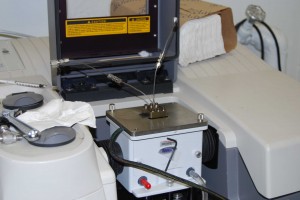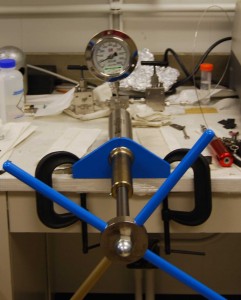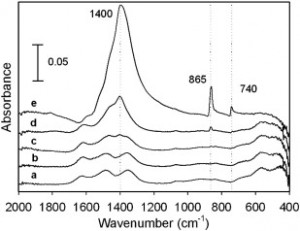CO2 Sequestration: and relevant Fe bearing Minerals
CO2 sequestration is a strategy for minimizing the amount of CO2 gas released into the atmosphere by pumping it underground. The ability of CO2 to remain underground has been modeled, but few studies have experimentally tested its effect on the underground environment. Although CO2 is the major product of burning fossil fuels, pumping stations will also emit smaller amounts of SO2 and H2S. These sulfur compounds have the ability to reduce iron(III) oxides which may reprecipitate as iron sulfides or iron carbonate (siderite).
Furthermore. CO2 becomes a supercritical fluid above its critical point (~31 C and ~1100 psi) which will easily be obtained during the pumping of CO2underground. Supercritical CO2 is used as a solvent in industrial applications and chromatography. The effects of supercritical (sc) CO2 and these sulfur species on the underground environment will be investigated by the Strongin lab and the Schoonen lab in Stony Brook.
One key advantage the Strongin lab has in investigating this chemistry is the ability to monitor the infrared signature of the system under supercritical conditions in situ using ATR-FTIR. The ATR assembly used is suited specifically for surface sensitive monitoring of supercritical applications. Initial investigations will be applied to ferrihydrite due to its higher reactivity compared to other iron oxides, and previous experience with the material in our lab. Further studies will include other iron bearing minerals and such other analytical techniques as XPS and TEM.


